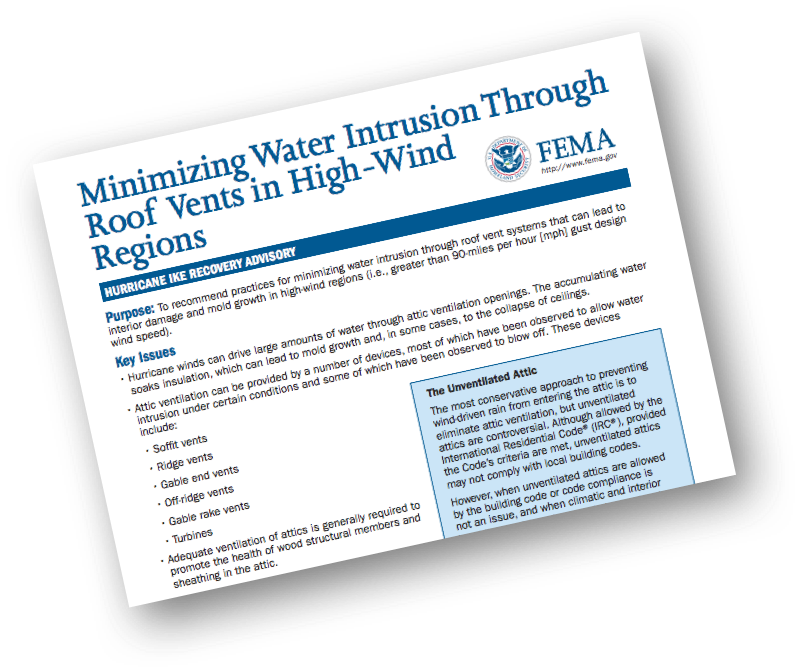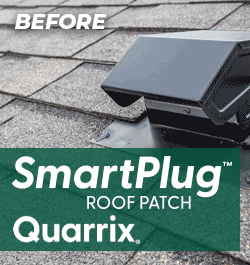Any Hurricanes in Your Forecast?

By Andy Swan, Roof Saver.
Knowing what failed during past hurricanes, FEMA spells out the proper way to avoid this problem when selecting, installing or replacing the vents on a roof.
You plan for the worst and hope for the best with everything you do – safety, team member training and the quality, proven materials you use on the job. If you work in the High Velocity Hurricane Zone your plan includes minimizing water intrusion through roof vents.
The Federal Emergency Management Agency, FEMA, has a great advisory brochure available here.
In short, every type of ventilation on the building is an opportunity for wind-driven rain to penetrate the structure and cause damage. Knowing what failed during past hurricanes, FEMA spells out the proper way to avoid this problem when selecting, installing or replacing the vents on a roof.
Who would have thought that the most common place for water intrusion is through the soffit? Poorly installed vents are often blown off the structure, leaving a gaping hole running the length of the building. If replacement before the storm season is not practical, one remedy is to secure the soffit vents to nailing strips no more than 12 inches apart and laying down sealant along the joint with the building wall and dabbing into the indentations between soffit panels and the wall channel.
The ridge vent you install should be tested to meet HVHZ conditions. This evaluates the ability of the vent and fasteners to withstand wind speeds to 110 MPH with 8 inches of rain per hour. You can expect your work to defy the wind if you install a High Velocity Hurricane Zone-tested product per the manufacturer’s instructions. Proper fastener type, length and spacing is critical to passing the test.
Gable end vents are almost certain to allow water intrusion when gusts exceed 90 MPH. If these are in place they need to be sealed or shuttered from the outside if possible. The next best option is to seal from inside the attic while making certain that any water has a path to drain out of the attic and not down into the wall cavity.
Learn more about Roof Saver at www.roofsaver.com.








-2.png)










Comments
Leave a Reply
Have an account? Login to leave a comment!
Sign In